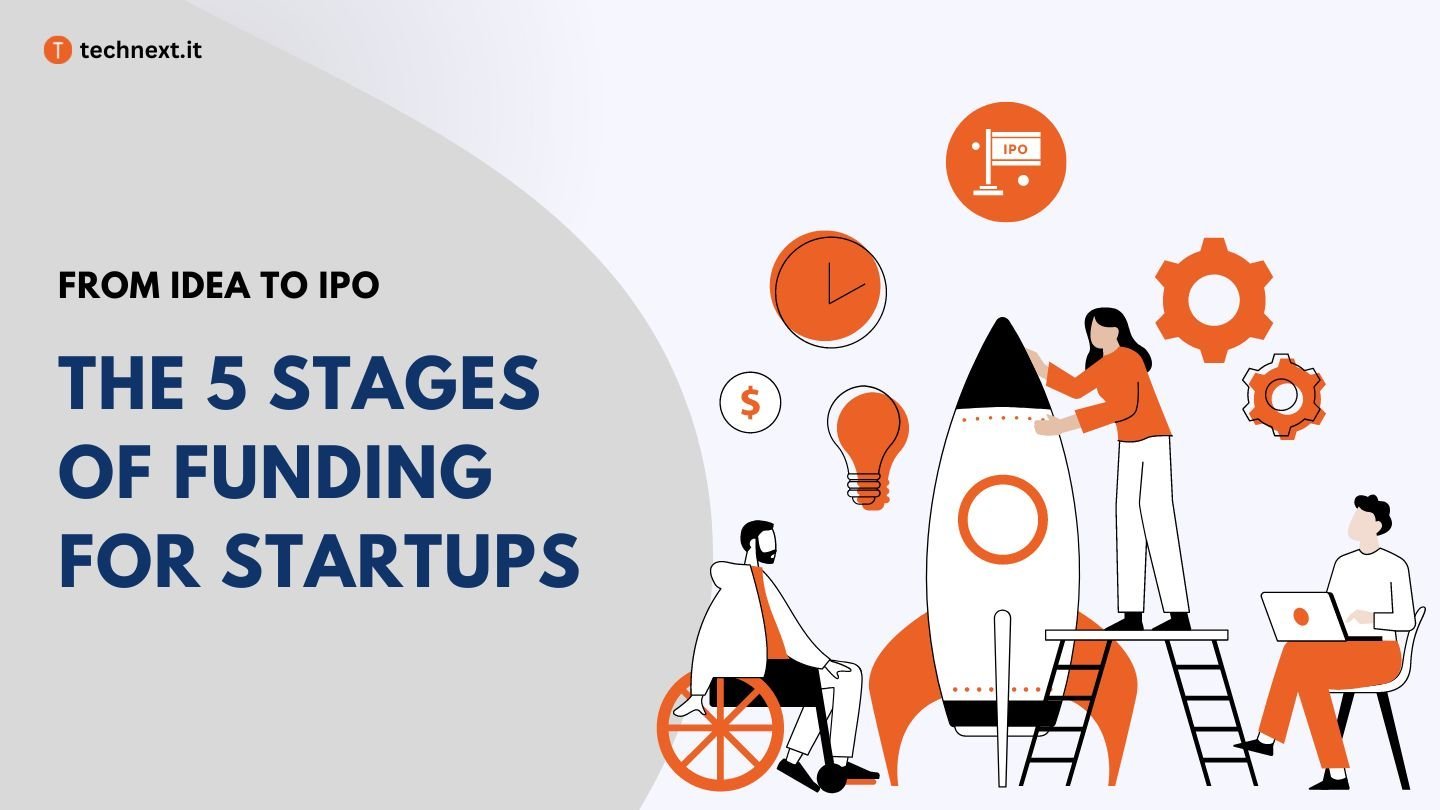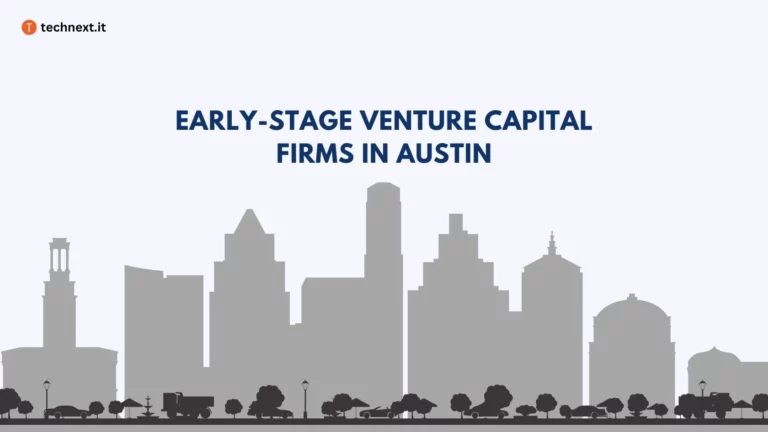From Idea to IPO: The 5 Stages of Funding for Startups
Learn about the 5 stages of startup funding, including what resources you’ll have at each of those stages. What you should try to do, and how much investment you can expect at each stage.

If you’re an entrepreneur with a great idea, you probably dream of turning it into something big, maybe even a unicorn. Reaching this goal requires a significant financial investment, and that’s where fundraising comes into play.
In order to attract investors, you must go through a series of stages demonstrating the potential for your company’s success.
This article will discuss the stages of funding for startups, the resources available, and the fundraising options at each stage so you can make a clear plan for your dream idea.
Key Takeaways
- A startup journey involves several funding stages, and each stage is unique in terms of available resources, challenges, goals, and objectives.
- The journey starts with the pre-seed funding stage, when all you have is your idea. In this stage, your goal is to develop an MVP to prove that your idea is feasible. To make the MVP, you may invest your own money or take funding from family or early-stage VC firms.
- Then comes the seed funding stage, when you have an MVP, and your goal is to build a functional product. The leading investors are VC firms.
- You have a working product and a user base in the Series A, B & C stages, together known as the growth stage. Your responsibility is to grow the market share and become a key player.
- The last milestone is to make your company public & offer your IPO. Thus, you exit from the startup status and impact the world through your idea.
Why Startups Take Fundings?
It seems like a no-brainer for anyone to take funds and grow the business. But accepting investments has its downsides. You may have to let go of control of your own company, which is often difficult for many entrepreneurs. Yet, almost all entrepreneurs seek investment, but why?
- Investors don’t just help you with money; they often come with knowledge gained from years of experience setting up businesses. This is quite helpful for a young founder.
- We all know the tech industry is quite competitive; if you don’t move fast, you will perish from the market. Investments help startup businesses to proliferate and, more importantly, sustain themselves in the market.
- To build a sustainable business, you need to build a solid financial foundation. Taking investments can ensure a strong financial foundation for your startup.
- The first job of a startup founder is to build the product. Or at least build an MVP. Developing an MVP can be an expensive and time-consuming process, but the investment ensures that you have enough resources to build your product.
- Let’s say you have a product but need financial support to market the product and increase sales. Startup funds can give you that financial support.
- Apart from that, startup financing helps founders because it
- Provides a competitive advantage in public relations.
- Makes hiring team members easy.
- Captures the market’s attention and boosts your visibility.
- Helps to seize opportunities and achieve goals.
Stages of Startup Funding
As a founder, you will not be able to manage a substantial amount of funds initially. You must show investors that your idea is feasible to become a product, has the potential to grow, and will solve real-life problems. You must try this out gradually; that’s why the different startup stages come into play.
Let’s dive deeper and learn about the stages of funding for startups
Pre-seed Funding Stage
This is the early- stage of fundraising. Investing in exchange for equity is not an option at this stage because all you have is an idea. Your idea needs to be sold. You need a minimum viable product (MVP) to market your idea. You could consult the people you know or the resources at your hands. Usually, Pre-seed funding amounts from $50,000 to $250,000, and the runway duration is 12 to 18 months. Here is a list of potential investors at this stage.
Investors of Pre-Seed Stage
- Startup Owners (you and your co-founders).
- Friends, Family, and Supporters.
- Early Stage Venture Funds (Micro VCs).
- Small investors who make decisions by themselves.

Seed funding stage
Your first “formal” fundraising round will be a seed stage. This is where the founders of the company will pitch their idea to potential investors and try to secure funding in order to get their business off the ground.
What You Have
After the pre-seed phase, you now have an MVP to demonstrate that your idea is practical and that you can turn it into a sustainable business and, eventually, a unicorn.
What you are trying to achieve?
The main goal is to complete the fully functional product and get customer traction. Also, to cover the cost of marketing, new team hiring, and marketing, etc.
Investment
A seed round can raise anything from $100,000 to $5 million, although the average is $2. 2 million. Experts recommend offering 10-20% of your company’s stock during a seed round, and you should avoid giving more than 25%.
Investors of Seed Stage
Angel investors
These high-net-worth individuals invest in growth-oriented startups.
500 Startups
500 Global is a $2.7 billion venture capital fund that backs founders who are creating technological innovations.
Incubators
An incubator helps entrepreneurs incubate their ideas by providing finance, grants, equity, office space, legal aid, utilities, and methods.
Many leading institutions in different nations have an incubator to support student startup ideas.
Y Combinator
Y Combinator was founded in 2005. It has launched over 3,000 startups, including Airbnb, Coinbase, etc.
Crowdfunding
Crowdfunding involves collecting small amounts from a vast population.
These internet venues include Kickstarter and IndieGoGo
AngelPad
AngelPad is a seed-stage company incubator in the United States founded in September 2010 by Thomas Korte and Carine Magescas, with six other former Google workers serving as mentors.
Techstars
Techstars is a global investment firm that provides early-stage entrepreneurs with funding, one-on-one coaching, a worldwide network, and tailored programming.

Series A funding stage
Series A financing is part of a startup’s capital-raising process and the initial round of venture capital financing.
What You Have
Following the seed phase, you should have a working product and a customer base with continuous revenue flow by this point. You understand where your product fits in the present market.
Investment
A startup’s usual Series A funding goal is between $2 and $15 million. This figure varies by industry. During a Series A round, investors can typically acquire 10% to 30% of the startup. Anything more than 38% is not recommended.
Investors of Series A Funding Stage
Venture Capital Firms
They are the most prominent investors. These firms invest in revenue-generating early-stage pre-profit companies, such as IDG Capital, New Enterprise Associates, Plug and Play, SOSV, etc. These VC firms support financially and guide startups.
Venture Debt Funds
Venture debt helps early-stage startups with financing between equity fundraising rounds. Long-term funding with venture debt is rare. These loans are usually repaid within 18 months or two-three years, such as SVB, Flashpoint, GlobalGrowthCap, Orbit Capital, etc.
Nbfcs (Non-Banking Financial Companies) Or Banks
Series A allows startups to contact banks or NBFCs for debt capital with interest payments, as they can show their potential to pay back. Many founders prefer debt financing because it doesn’t diminish their startup equity.

Series B Funding Stage
The second round, or Series B, follows Round A. Series B funding typically occurs after a company has established a solid foundation for its operations and grown beyond the startup phase. Many startups don’t even go for series B as they already start making revenue by now.
What You Have
With the proven success result of product and business growth, it gets easier time raising money in this one.
What You Are Trying To Achieve
The aim is to establish that your startup can be implemented at a large scale by applying innovative market expansion techniques. Creating operational teams like business development, marketing, and also market share expansion should be on the goal list.
Investment
Most of the groundwork will have been laid by the time Series A and seed money come around. Typically, Series B firms should expect to get between $7 million and $10 million in the capital. Although, Some startups manage to raise a lot higher at this startup funding stage.
Investors Of Series B Funding Stage
Venture Capital Funds
The prior VC firm usually leads this round, along with others interested in the startup’s success.
Private Investment Companies
Direct money raising from private equity investors may entail investment limits, such as a percentage from each investor.
Online Equity Crowdfunding Platforms
New finance approaches like internet crowdsourcing democratize the process. Equity crowdfunding platforms offer public participation in series B investment.

Series C Funding Stage
The series C fundraising stage is the fifth and final round of investor funding. Companies that have already successfully raised Pre-Seed, Seed, Series A, and Series B fundraising rounds and have a solid product market are more likely to raise a Series C round.
What You Have
Series C funding indicates that the company has reached a significant level of success, which means your business is finishing stages of development with stable sales and profitability. The primary products or services created enormous market demand, attracting a large consumer base.
What You Are Trying To Achieve
Series C funding aims to develop new features, expand market share, large-scale mergers, and acquisitions, and also prepare to go public on the stock market.
Investment
Typically, a Series C round of capital brings around $50 million at a valuation of $100 million to $120 million.
Investors Of Series C Funding Stage
Investors such as venture capital firms (VCs) that participated in earlier rounds are still a mainstay, the private equity, hedge fund, etc. New late-stage investors may be interested in participating in this round as well.

Other stages of Funding for Startups
Series C is usually the last stage of fundraising a startup goes through, although some companies look for additional rounds to raise more capital. But if a startup makes it to Series D, E, F, or G, it’s not good news for the startup. It shows that the startup failed to achieve the desired success. The startup needs more money to survive than its revenue can provide. Subsequent rounds of fundraising devalue a startup rather than increase its value.
Initial Public Offering (IPO)
An initial public offering (IPO) is the peak of a startup’s success and can occur anytime between Series A and Series G. It is the process of launching the startup on the stock market and selling corporate shares to the public for the first time. time. The initial public offering is used to raise funds for further expansion or allow the founders to sell their remaining shares for personal gain.
Being listed on the stock exchange is a complex procedure. It is riddled with financial and legal formalities.
- Putting together a team of SEC experts, accountants, attorneys, and underwriters for a public offering
- Preparation of financial statements for audit of the firm.
- Compilation of startup data, such as financials and future operations projections.
- Completing government IPO formalities, including SEC prospectus submission and offering date announcement.
FAQ’s about Stages of Funding for Startups
How many fundraising cycles can a business accept?
Before achieving an IPO, most companies go through three seed financing rounds. But there is no hard and fast rule on how many times you can fundraise.
At what stage do startups fail?
Roughly 90% of tech startups fail. In the first year, 10% of new businesses fail. Seventy percent of companies fail between their second and fifth year in operation. There is a very similar rate of startup failure across different markets.
How many methods are there for fundraising?
There are three methods of fundraising – retained earnings, equity capital, and debt capital.
Who is in charge of a funding round?
When raising a priced round, founders must find a lead investor willing to be in charge of a funding round. A lead investor is a person or organization conducting a funding round and may act on behalf of other investors.
I hope you now have a clear understanding of the stages of startup funding. Each stage comes with unique challenges, and as the founder, you must face and solve each one. The following articles will help you solve those problems and get you to your desired destination.
A Complete Guide to the Ideal Tech Startup Team Structure
A Complete Guide to Ideal Startup Marketing Team Structure
How to Split Equity in a Startup Fairly in 2022
What’s the Role of a CEO in a StartUp (At Different Stages)
How to Hire Developers for a Startup
A Complete Guide to the Ideal Tech Startup Team Structure
In-house Development vs Outsourcing: Guideline for Founders
Best of Luck!

![15 Best Miami Venture Capital Firms for Early-Stage Startups [2024]](https://e6tgusu7445.exactdn.com/wp-content/uploads/2024/03/Best-Venture-Capital-Firms-in-Miami-for-Early-Stage-Startups-768x432.jpg?strip=all&lossy=0&sharp=1&ssl=1)
![13 Top Australia Venture Capital Firms for Early-Stage Tech Startups [2024]](https://e6tgusu7445.exactdn.com/wp-content/uploads/2024/03/Top-Software-Companies-in-Bangladesh--768x432.jpg?strip=all&lossy=0&sharp=1&ssl=1)


![15 Top Berlin Venture Capital Firms for Early-Stage Startups [2024]](https://e6tgusu7445.exactdn.com/wp-content/uploads/2024/04/Berlin-Venture-Capital-Firms-768x432.jpg?strip=all&lossy=0&sharp=1&ssl=1)
![17 New York Venture Capital Firms for Early-Stage Startups[2024]](https://e6tgusu7445.exactdn.com/wp-content/uploads/2024/04/New-York-Venture-Capital-768x432.jpg?strip=all&lossy=0&sharp=1&ssl=1)